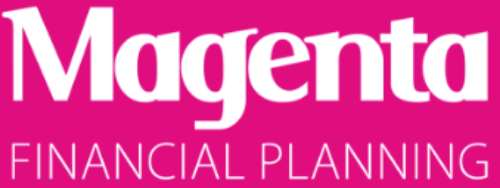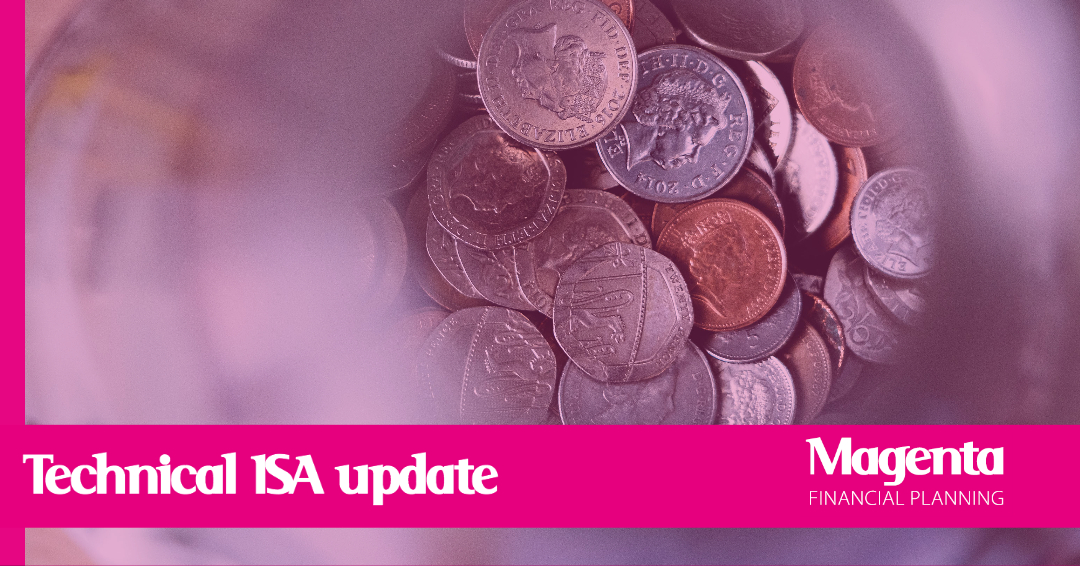ISAs have gotten all complicated over the years – with multiple types and different limits.
This week, we thought we’d write an update about the types of ISAs now available and their limits, by way of a refresher! And, if you have not yet used your ISA allowance for the 2020/21 tax year, as a reminder of your options.
Individual Savings Accounts (ISAs) are tax-free accounts for your savings or investments.
Because of the tax advantages, there is a cap on the amount that can be paid into ISAs each tax year, known as an “ISA allowance”.
Adult ISAs
The total ISA allowance for the 2020/21 tax year is £20,000 and there are currently 4 types of ISA available:
- Cash ISAs
- Stocks & Shares ISAs
- Innovative Finance ISAs
- Lifetime ISAs
You can put money into one of each kind of ISA each tax year, or you can choose to use only one type of account, but the maximum that can be paid into a Lifetime ISA is £4,000.
If your ISA is also now allowed to be “flexible”! So, you can take out money then put it back in during the same tax year without impacting your current year’s allowance; however, not all providers offer flexible ISAs, so check before making any short term withdrawals!
Cash ISAs
Cash ISAs can be opened by anyone over the age of 16 and are generally available via banks and building societies. Cash ISAs may offer better rates than standard savings accounts, but these are still unlikely to keep pace with the rate of inflation over the long term.
Stocks & Shares ISAs
Stocks & Shares ISAs are available to anyone over the age of 18 and can house various types of investments – including shares, unit trusts, investment funds and bonds.
Some newer Stocks & Shares ISAs have been designed with Inheritance Tax in mind, and offer investments which expect to qualify for relief from Inheritance Tax after an initial 2-year holding period, although these are typically much higher-risk and only for experienced investors.
Innovative Finance ISAs
Innovative Finance ISAs were introduced in April 2016 and typically involve “peer-to-peer lending” – where your cash provides loans to individuals or businesses, cutting out the middle man (usually the bank).
As a consequence, peer-to-peer lending allows you to achieve a much higher rate of return than is available via standard savings accounts, but this comes with much greater risk.
Important to note: Unlike savings in a Cash ISA or investment in a Stocks & Shares ISA, peer-to-peer lending is not currently protected by the Financial Services Compensation Scheme (FSCS).
Lifetime ISAs
Lifetime ISAs (LISAs) were introduced in April 2017 and can be opened by anyone between the ages of 18 and 40. Existing LISAs can then be paid into until age 50.
LISAs can house cash or investments, but have different contribution limits and withdrawal rules to other types of ISAs, because of the government bonus that is received on these funds.
You can use a LISA to buy your first home or save for later life, and the government will add a 25% bonus to your savings, up to a maximum of £1,000 per year (based on the £4,000 contribution limit).
You can withdraw money from your ISA without penalty if you’re buying your first home, over 60, or terminally ill. Withdrawals for any other reason will face a withdrawal charge to recover the government bonus received. This charge is currently 20%, but goes back up to 25% on 6th April 2021.
Wait, what about Help to Buy ISAs?
Help to Buy ISAs were the first type of ISAs designed to help with a new home purchase but were effectively made redundant by the introduction of similar, but more flexible, LISAs.
New Help to Buy ISAs stopped being available from November 2019. If you already have a Help to Buy ISA, you will be able to continue saving into your account until November 2029, or you can transfer it into a LISA (up to the LISA contribution limit).
Junior ISAs
Junior ISAs (JISAs) are available to children under 18, but can be managed by the child from their 16th birthday. Similar to adult ISAs, JISAs can hold investments as well as cash.
The JISA allowance is currently £9,000 for 2020/21 and is completely separate from the adult ISA allowance. This creates a “loophole” where children aged 16-18 are able to receive up to £9,000 into a JISA, as well as up to £20,000 into an adult Cash ISA.
Summary
The main types of ISA and their limits have been summarised below:
| Cash ISA | Stocks & Shares ISA | Innovative Finance ISA | Lifetime ISA | Junior ISA | |
|---|---|---|---|---|---|
| Annual Limit | £20,000 | £20,000 | £20,000 | £4,000 | £9,000 |
| Minimum Age | 16 | 18 | 18 | 18 | N/A |
| Maximum Age | N/A | N/A | N/A | 40 to open 50 to pay in | 18 |
To provide some examples on how this all works in practice…
- Josh, aged 10, can receive up to £9,000 into a Junior ISA
- Jenny, aged 17, can receive up to £9,000 into a Junior ISA and up to £20,000 into a Cash ISA
- Joe, aged 26, can pay up to £4,000 into a LISA with the remainder, up to a total of £20,000, split between a Cash ISA, a Stocks & Shares ISA and/or an Innovative Finance ISA
- Jane, aged 41, can do the same as Josh, assuming she already has a LISA. If not, her £20,000 allowance can only be split between Cash, Stocks & Shares and Innovative Finance ISAs.
- Jim, aged 65, can pay into Cash, Stocks & Shares or Innovative Finance ISAs, up to a total of £20,000. He can also withdraw any funds saved into a LISA penalty-free (in theory – they haven’t actually been about long enough for this yet!)

